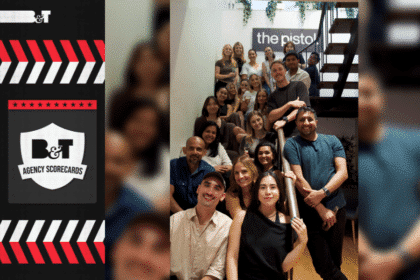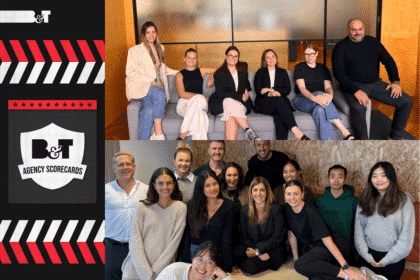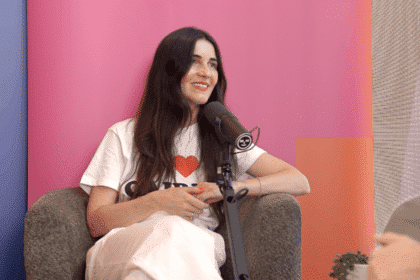New research commissioned by Snapchat equips brands and marketers with insights into the latest trends to take shape amongst Australia’s Gen Z community.
A research report released today by Snapchat has offered new insight into Australia’s Gen Z community, challenging a number of common assumptions previously held about the generation.
Over 2,000 young Australians were included in the study for the “Snap//Shots: Gen Z” report, with the findings shedding light on changing attitudes to work, wellbeing, identity and more.
The key takeaway for marketers is that Gen Z is evolving, and they’re expecting brands to evolve with them.
Commenting on today’s report, Matt Coote, head of enterprise, Snap ANZ, said: “As Gen Z grows its influence and buying power, marketers need to work harder to understand the nuances of this generation, what’s important to them, and what they expect from brands in 2023.
“This report offers real-world insight directly from the mouths of young Australians, and highlights how brands can play a meaningful role in helping them overcome the challenges of today. If one thing’s for certain, Gen Z are going to do things differently as they carve their paths in this world – and this study presents brands with an exciting opportunity to make an impact and do things differently too!”
The new research has identified a number of key trends taking shape amongst members of Australia’s
Gen Z community – those born between 1997 and 2012:
1. Doing The Work: Seeking solutions for holistic health
There’s an opportunity for brands to play a larger role in delivering inspiring and wellbeing-focused content that offers actionable solutions for Gen Z.
Spirituality, mental health and wellbeing are currently key priorities for Gen Z, and 64 per cent of them find support for managing their health holistically on social media.
However, seven in ten (71 per cent) said they have plenty of ideas and information about how to manage their health, but struggle to put them into action.
“(We’re seeing) more literacy on issues like mental health and generational trauma, being more open to therapy, having sensitivity around minority’s experiences. However, we may not have enough tools to self-soothe, and deal with what they discover” Female, 24, VIC
2. Beyond Binaries: Moving towards fluid self-identification
Gen Z sees identity as a constant state of evolution, and they expect brands and advertisers to represent
them. Despite efforts from brands to be more inclusive, over 3 in 4 (76 per cent) Gen Z think brands need to do a better job of accurately representing and reflecting the diversity in Australia.
Brands can provide a platform for first-person storytelling, while also remaining upbeat and using the correct
self-identification language.
3. Work, Reworked: Achieving their goals in ‘their way’
Being as ambitious as ever, Gen Z are also finding ways to reach their goals, so organisations that embrace new ways of work and mindsets have the best chance of attracting Gen Z to their workforce.
Having witnessed the workplace changes off the back of the pandemic, the generation is shifting away from the traditional ‘9-5’, with almost 9 in 10 (87 per cent) preferring instead to explore new ways of earning a living, and 4 in 5 (83 per cent) actively looking for employment opportunities that offer balance, flexibility, and
wellbeing as part of the package.
“A lot of people back in the day might have thought white collar jobs were the best jobs because of security… but my generation are finding that’s just not true. Do what you love, find what you enjoy, even if you’re not working all the time, as long as you have enough to do the things you like.” Male, 23, SA
4. The Trend Trap: Entering an era of cultural burnout
The report also found that an insatiable quest for ‘newness’ is leading to an era of cultural burnout, with
73 per cent of Aussie Gen Z feeling pressure to keep up with the latest topics, trends and content to make sure they’re not seen as out of touch and 2 in 3 (66 per cent) feeling overwhelmed and fatigued by the sheer volume
of ‘new’ stuff that they see online.
The key role for brands and advertisers to play is to surprise and delight Gen Z through unexpected collaborations, activations and content, while also helping them to transcend trends and connect on a deeper level over more enduring values and ideas.
5. Unfiltered Authenticity: Putting privacy and intentionality front-and-centre
Having grown up under the spotlight, Gen Z’s desire for intimacy, privacy and authenticity is changing the
way they communicate, both on and offline. Emojis are out for a third of Gen Z (33 per cent), while the remainder state their usage of them has evolved – and voice notes and video messages are very much in (44 per cent), taking over the space previously held by the text message.
Almost 3 in 4 (74 per cent) of Gen Z actively seek to be more authentic and real online and they’re expecting the same from the brands they communicate with too, with a real, honest and personal approach now preferred to the polished perfection many brands have leant on for years.
“You don’t show (your content to) everyone… it’s just my best friends who I care about, people who’ll actually care about it. I feel like I can be myself through this, like I can actually share me.” Female, 16, VIC
6. Passionate Pursuits: Using social media to inspire real-world action
The “chronically online” generation is now putting greater importance on their hobbies, passions and pursuits, and they’re using social media in novel ways to inspire their ‘real’ lives.
Almost 8 in 10 (79 per cent) now “prefer to use social media as a tool to find new skills, experiences and hobbies, rather than a place to post content” and 3 in 4 (74 per cent) said that ‘focussing on real life’ was what they cared about the most.
Brands that can build inspiration, activation and participation into their comms will be the ones to build greater affinity with Gen Z.
Snapchat partnered with Crowd DNA to conduct the research, in a study of over 2,000 Australian young
people.








